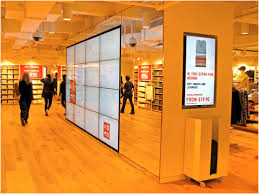Webrooming – Problem or opportunity?
Showrooming (the practise of consumers researching on their smart phones whilst in store) has been a major concern for retailers, many of whom have been desperate to stop it. While 73% of shoppers have showroomed in the past six months, 88% have engaged in webrooming — an emerging trend that actually benefits brick-and-mortar retailers.
So what is webrooming? Like showrooming, webrooming combines online channels and brick-and-mortar retail opportunities. But instead of viewing products in-store and purchasing them online, webrooming consumers research products online before visiting a brick-and-mortar store for final evaluation and purchase. So it is basically the same process but in reverse. Most of us research online when looking to buy a product and whether we buy online or instore, it highlights that fact that consumers expect the ability to shop easily across many different channels. The new retail reality is consumers allow online and offline channels to influence their buying decisions — regardless of how or where they eventually purchase the product.
Embracing Webrooming
The practise of showrooming and webrooming is not going to go away so retailers should embrace the process and play an active role to influence the buying decisions. I have seen this done in store as simply as allowing customers to use a computer in store which provides the sales person with the opportunity to price match without losing the sale.
Shoppers expect the customer experience to be continuous across all channels. To take advantage of the webrooming trend, leading retail brands are launching initiatives that expand consumers’ access to information online, while retaining control over the customer journey by emphasizing brick-and-mortar as the customer’s final destination.
- Embrace it – Shoppers expect the customer experience to be continuous across all channels. This means that retailers have an opportunity to adapt their existing business models to provide a better experience across all available channels, thus allowing retailers to tap into the benefits of webrooming, and significantly improve customer satisfaction, loyalty and other key experience metrics.
- Allow for seamless transactions across channels. Rather than seeing offline and online as separate channels take a one view approach rather than separate sales areas within the business. Retailers need to recognize that all touch points and interactions should be working toward a common goal—the delivery of a unified customer experience.
- Capture Data Every channel and touch point gives you as the retailer data you can leverage to understand your customer behaviour, allowing you to improve customer experiences. Knowing what channels you are customers have purchased through is vital to optimising the web rooming opportunity and to create a relevant experience for your customer
In many ways, webrooming and showrooming are two sides of the same coin. The line between in-store and online is blurring, and going forward, the most successful retailers will be those that enable consistent and seamless customer experiences across an increasingly diverse array of channels and touch points. This tradigital approach is one that must be adopted by any retailer that wants to still be in business in the next 5 years.




